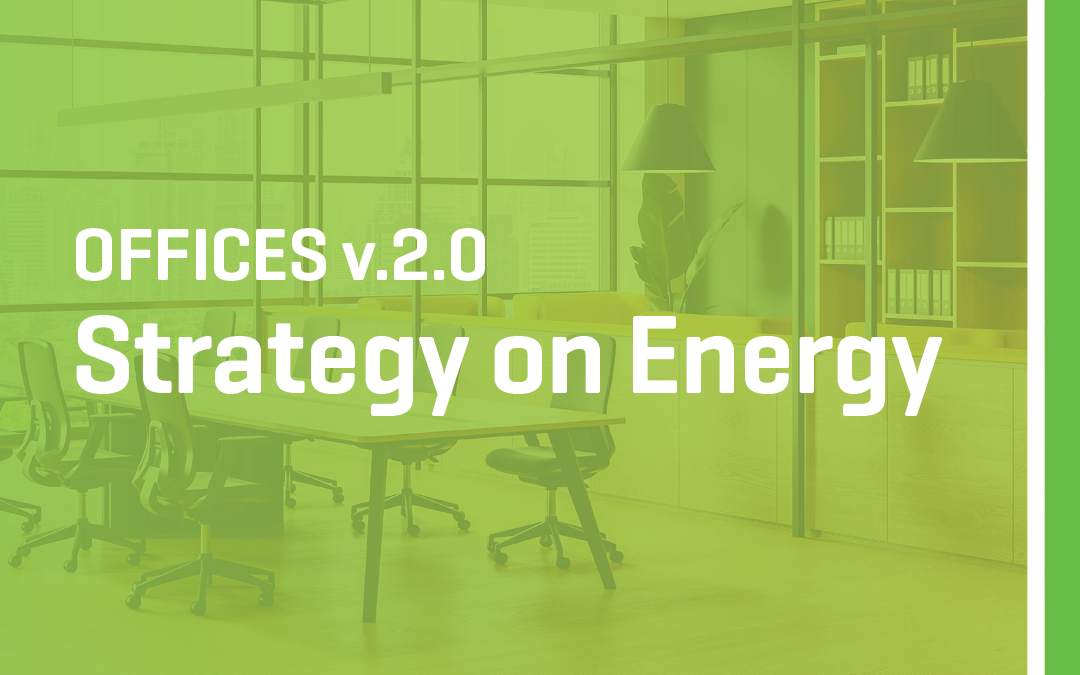Over the past year, we’ve been working on some important updates to the SKArating Offices scheme to ensure it continues to reflect good practice in sustainable interior fit-outs. As part of this process, we’ll soon be launching a Public Consultation, giving you the opportunity to share your thoughts and help shape the future of the scheme. To support this, we’ll be publishing a series of blog posts over the coming weeks, each focusing on one of the Impact Categories and the proposed updates that are happening within Good Practice Measures (GPMs) in each category. The first category we are focusing on is Energy & CO2.
As SKArating evolves, the Energy measures remain a critical issue in shaping sustainable fit-out projects — and it’s not standing still. Recent updates mark a shift toward more accurate impact prioritisation, better performance accountability, and smarter energy-related decision-making throughout the project lifecycle. Bringing the scheme in line with the strategic aims of SKArating; to align all projects to Net Zero carbon targets and 100% Circularity. With these as our key aims, the updated SKArating scheme brings a sharper focus to energy performance, efficient use of energy, and the reduction of greenhouse gas emissions in general — not just in design, but in delivery and operation.
Performance, Not Promises
Until now, many interior fit-out projects stopped at “energy-efficient design.” SKArating is now going further by assessing energy use during Occupancy and ensuring science-based targets are actually on track. The occupancy stage data demonstrating Net Zero aligned performance (12 months post-completion) is part of the Occupancy Stage assessment, closing the gap between intent and outcome. Projects will still be able to certify at Handover as being in alignment and ratify this performance following a year of Occupancy.
Ranking What Matters
Each issue in SKArating is ranked by its environmental impact relative to each other, and following the SKArating Philosophy, this prioritises direct real impact over potential change in the future. There is also a reflection of the scheme’s aims and priorities in the brief which reflect current critical issues and priorities – Net Zero alignment and 100% Circularity being the two top issues. Following this, Energy & CO2 measures are of the top-ranked measures. If your project includes a scope of works that impacts energy related elements, it’s not going to be optional — the ranking will include energy related gateway measures that must be achieved to get a project certified.
Designed by the Industry
This isn’t a theoretical framework. The updated Energy & CO2 measure have been co-developed by engineers, contractors, suppliers, designers, and clients. It’s practical, realistic, and ready to implement following current tools, knowledge and processes.
Reducing Greenwash Risk
By linking design, delivery, and operational performance, SKArating protects everyone involved from misleading claims and missed targets. Clients can ensure the performance they require will be actually delivered, and engineers and designers are supported to follow good practice through a project.
Measures of note:
- New – D85 Energy Use Intensity: new measure requiring the target and modelling of operational energy in line with the limits of the UK Net Zero Building Standard.
- New – P18 Zero carbon energy contracts: awarding tenants for energy supply that avoids fossil fuels.
- New – E31 Energy efficient ventilation equipment: supporting passive design and operation within the scope of fit-out demises.
- New – D86 Landlord & Tenant collaboration: a collaborative and coordinated approach to efforts between both parties at an early enough stage in the process.
- Updated – E29 Energy demand reduction: tightened the criteria and supporting teams with solutions to consider.
- Simplified and combined measures relating to lighting design and heat pumps.
- Simplified energy measuring and monitoring measures and criteria.
- Removed measures that are deemed standard industry practice or where regulations have been lifted.
In short: the Energy & CO2 measures now reflect how buildings and tenancies really work, making it a win for clients, our project teams, for the planet, and for the future of sustainable fit-out.
Look out for the Public Consultation starting on Monday, May 12th, for 4 weeks, found through our Knowledge Hub and comms channels, for an opportunity to engage in the proposed changes.

